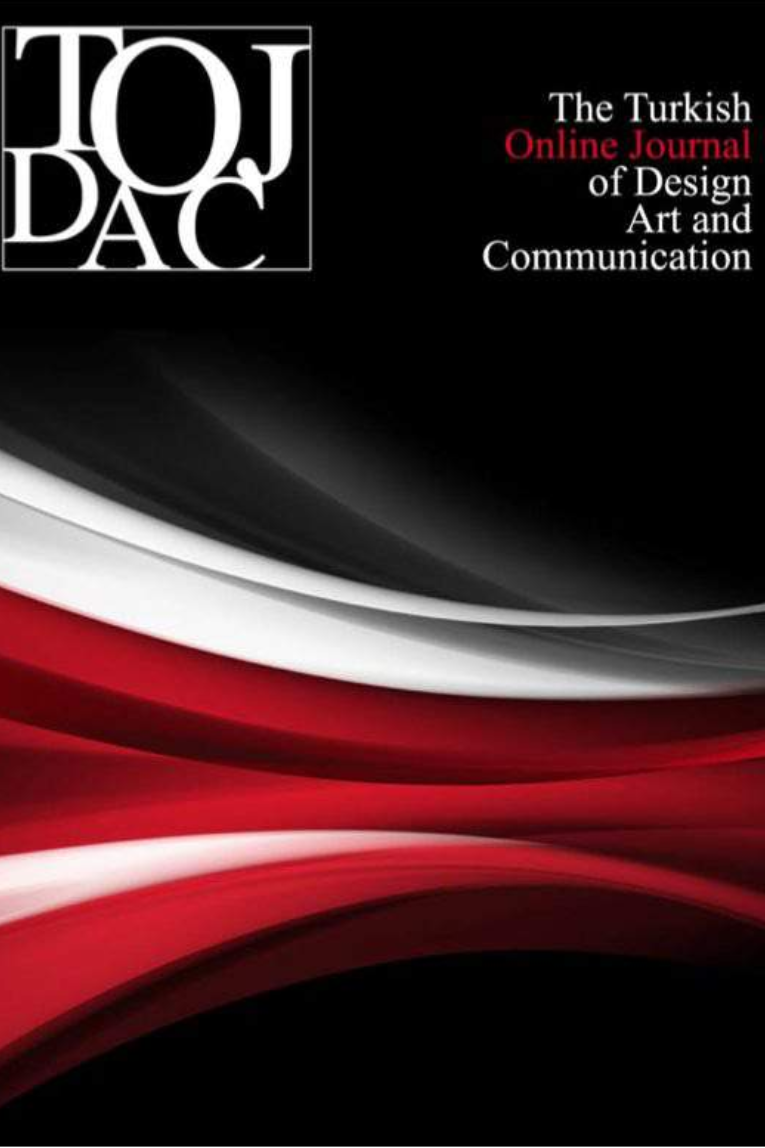MEKÂNDA TASARIM ÖGESİ OLARAK SERAMİK PANO KULLANIMINDA: SWİSSOTEL GRAND EFES ÖRNEĞİ
Bu araştırmada öncelikli olarak seramik kavramı ele alınmıştır. Toprağın insanlık tarihindeki sürecinin ve öneminin incelenmesiyle başlayan çalışma, seramik sanatının mimarlık ve iç mimarlık disiplinleri ile birleşerek oluşan seramik eserler çalışma kapsamında Dünya ve Türkiye örnekleri üzerinden incelenmiştir. Cumhuriyet Dönemi sanatçılarının eğitim amacı ile yurtdışına gönderilmesi ve sonrasında bilgi birikimlerini meslektaşlarına aktarması ile yeni bir dönem başlamıştır. Bu dönem ile sanatçıların seramik eserleri, cephe ve iç mekânlarda yer almıştır. Avrupa ve Türkiye’de çağdaş seramik sanatında oluşturulan seramik duvar pano örnekleri çalışma kapsamında incelenmiştir. Anadolu’nun seramik geleneğinin köklerini oluşturan öğeleri yeniden yorumlayan ve sanatçı kimlikleriyle Çağdaş Türk Seramik Sanatında anıtsal nitelikte eserleri olan Bedri Rahmi Eyüboğlu, Nasip İyem, Erdoğan Ersen, Attila Galatalı, Jale Yılmabaşar ve Beril Anılanmert’in seramik çalışmaları araştırma kapsamında ele alınmıştır. Çalışma alanı olarak, belirlenen bu sanatçıların eserlerinin yer aldığı Türkiye’de ilk sanat oteli olan İzmir / Swissotel Grand Efes Oteli seçilmiştir. Otelin bahçe ve iç mekânlarında bulunan seramik duvar panoları çalışmanın örneklem alanını oluşturmaktadır. Eserlerin bulunduğu dış/iç mekân ile olan ilişkisi yerinde tespit yöntemi ile analiz edilmiştir. Mimarlık/iç mimarlık disiplininin seramik sanatı ile birleşmesi sonucunda ortaya çıkan eserlerin kullanıcı üzerindeki etkisi ve mekânla olan ilişkisi araştırma kapsamında incelenmiştir.
Anahtar Kelimeler:
Mimarlık, İç Mimarlık, Tasarım, Seramik, Seramik Pano
IN THE USE OF CERAMIC BOARD AS A DESIGN ELEMENT IN SPACE; SWISSOTEL GRAND EFES EXAMPLE
In this study, primarily the concept of ceramics, the formation and development of ceramics are discussed. The study, which started with the examination of the process and importance of the soil in the history of humanity, was examined through the examples of the World and Turkey, within the scope of the study, the ceramic works formed by combining the art of ceramics with the disciplines of architecture and interior architecture. Starting from the practices in Anatolian civilizations, which have an important place in our cultural history, and continuing with the Seljuk Period, the Principalities Period and the Ottoman Period, floor and wall covering examples that are widely used in architectural structures built in these periods are included in the research. The process related to ceramics in Turkey during and after the Republican Period has been examined and the effects of this process on architecture/interior architecture and ceramic art are briefly explained. A new era started with the artists of the Republic Period being sent abroad for educational purposes and then transferring their knowledge to their colleagues. In this period, the ceramic works of the artists took place in the facade and interior spaces. Ceramic wall panel samples created in contemporary ceramic art in Europe and Turkey were examined within the scope of the study. The ceramic panel works of Bedri Rahmi Eyüboğlu, Nasip İyem, Erdoğan Ersen, Attila Galatalı, Jale Yılmabaşar and Beril Anılanmert, who reinterpret the elements forming the roots of the Anatolian ceramic tradition and have monumental works in Contemporary Turkish Ceramic Art with their artist identities, are discussed within the scope of the thesis. Izmir / Swissotel Grand Efes Hotel, which is the first art hotel in Turkey, where the works of determined Turkish artists are featured, was chosen as the study area. The ceramic wall panels in the garden and interiors of the hotel constitute the sample area of the study. Observation forms of the ceramic panels, which were examined on-site, were created and interviews were held with hotel users. The relationship of the artifacts with the exterior/indoor space was analyzed with the on-site detection method. The effects of the works that emerged as a result of the combination of architecture/interior architecture with the art of ceramics on the user and their relationship with the space were examined within the scope of the research.
Keywords:
Architecture, Interior Architecture, Design, Ceramics, Ceramic Panel.,
___
- Arıl, B. (2017). Kaplama Malzemesi Olan Seramiğin, İç Mekânlarda Alternatif Malzemelere Göre Kullanımının Avantajları ve Dezavantajları. Yüksek Lisans Tezi Maltepe Üniversitesi, Fen Bilimleri Enstitüsü, İstanbul.
- Anılanmert, B. (1985). Seramik Eğitiminde Yeni Yönelimler. Türkiye’de Sanat’ın Bugünü ve Yarını (69-74). Ankara: Hacettepe Üniversitesi Güzel Sanatlar Fakültesi Yayınları.
- Cingöz, A. (2022). Kişisel Arşiv.
- Can, Ö. C. (2018). Ankara'da Kamusal Alanlardaki Seramik Duvar Panoları. Yüksek Lisans Tezi, Hacettepe Üniversitesi, Sosyal Bilimler Enstitüsü, Ankara.
- Diren, S. (1964). Kişisel Arşiv.
- Kırca, A. D. & Üstündağ, D. D. (2020). Mimari Bağlamı Değişen Seramik Panoların İncelenmesi. Journal Of Arts, 3(4), 291-312.
- Swissotel Grand Efes Arşivi, İzmir.
- Mutlu, H. (2016). Çağdaş Kent Mimarisinde Seramik Panolar ve İnönü Üniversitesi Kongre ve Kültür Merkezi Uygulaması. İnönü Üniversitesi, Sanat ve Tasarım Dergisi.
- Yavuz, E. (2015). An Aethetic Responce to An Architectural Challenge: Architecture’s Dialogue With The Arts in Postwar Turkey. Doktora Tezi, Orta Doğu Teknik Üniversitesi, Fen Bilimleri Enstitiüsü, Ankara.
- Yavuz, E. (2017). Toplumla Yeni Bir Uzlaşı Alanı Tasarlama: Türkiye’de Mimarlığın Sanatla Kurduğu Diyalog. Mimarlık Dergisi.
- URL-1: www.chicagotribune.com, Erişim Tarihi: 12.11.2021
- URL-2: https://tr.wikipedia.org/wiki/Hilton_Istanbul_Bosphorus#/media/Dosya:Hilton-istanbul_hg-1959_hg.jpg Erişim Tarihi: 12.04.2022
- URL-3: https://m.facebook.com/fureyaproject/, Erişim Tarihi: 12.04.2021
- Başlangıç: 2011
- Yayıncı: Deniz YENGİN
Sayıdaki Diğer Makaleler
İÇ MEKAN TASARIMINDA DOĞA TEMELLİ TASARIM YAKLAŞIMLARI: KAPSAYICI BİR TASARIM ÖNERİSİ
“BİR TUTAM BİLİM BİR DÜNYA ŞENLİK” PROJESİ KATILIMCI GÖRÜŞLERİNİN DEĞERLENDİRİLMESİ
Hicran Özlem ILGIN, Meral KURTULMUŞ
Gürcan POLAT, Esra CİZMECİ ÜMİT
YAŞANABİLİR SOKAKLAR OLUŞTURMAK İÇİN TASARIM ÖNERİLERİ: CEP PARKLAR VE PARKLETLER
Pelin ŞAHİN KÖRMEÇLİ, İdris ELİTAŞ
HASHTAG AKTİVİZMİ ARAŞTIRMALARININ BIBLİYOMETRİK ANALİZİ
Burak İLİ, Güven Necati BÜYÜKBAYKAL
GÖRSEL SANATLARDA NARKİSSOS MİTİ VE NARSİSTİK EĞİLİMLER BAĞLAMINDA OTOPORTRE
LİBERALİZMİN TOPLUMSAL İZLERİNİN ZÜĞÜRT AĞA FİLMİ ÜZERİNDEN ANALİZİ
MADUN EĞLENEBİLİR Mİ? ANTİK AKDENİZ UYGARLIKLARINDA EĞLENCENİN GÜÇ EŞİTSİZLİKLERİYLE İLİŞKİSİ
